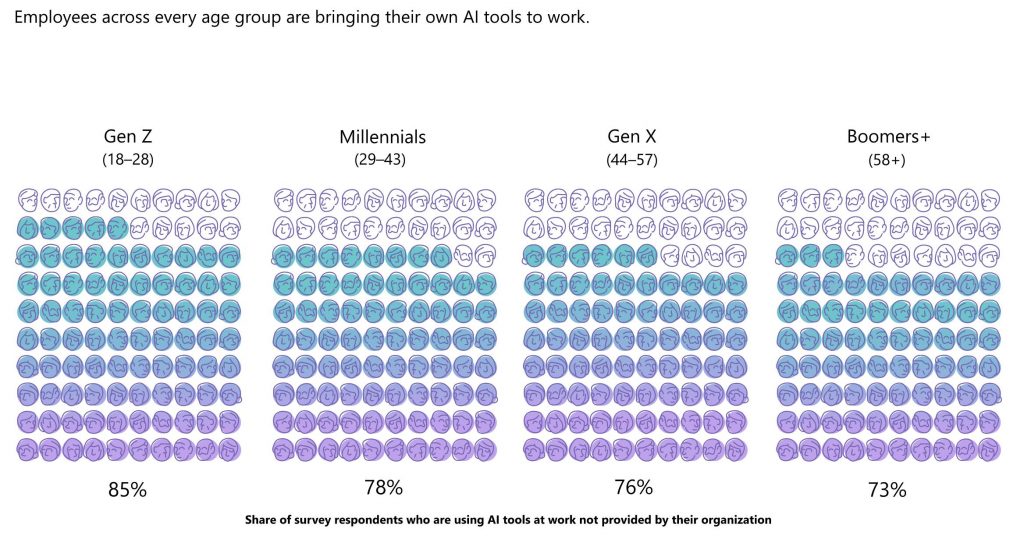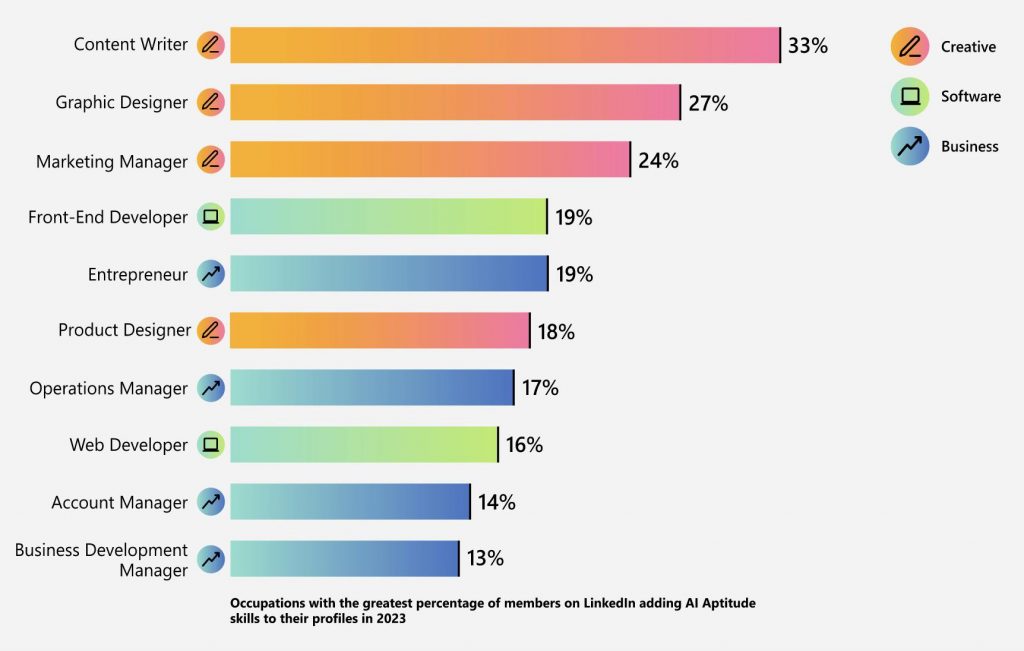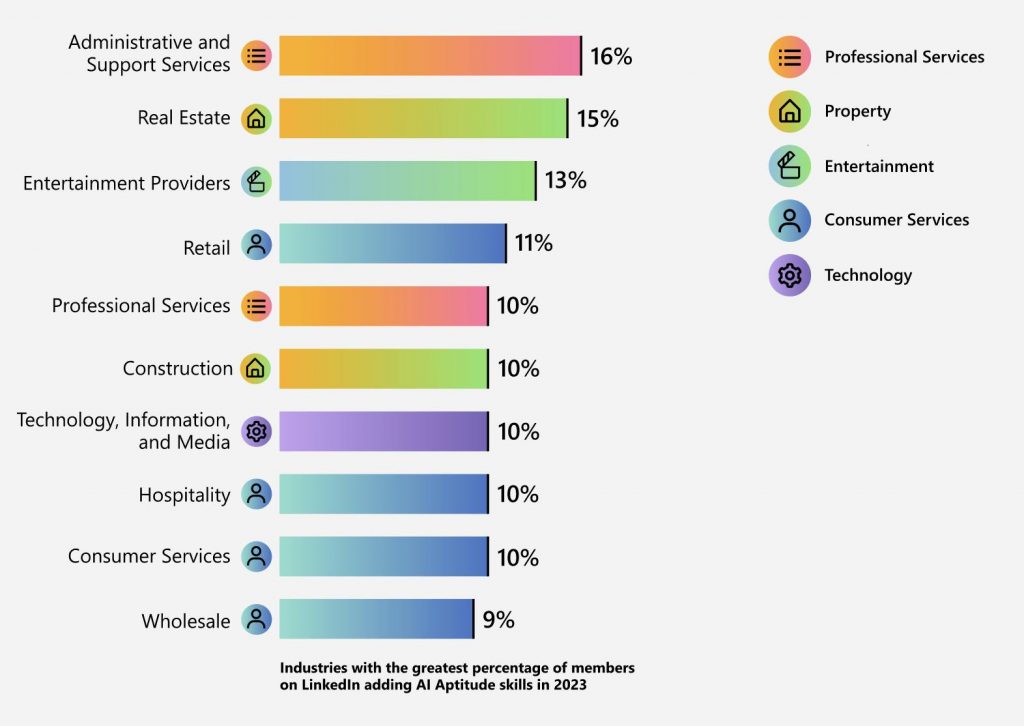What if I told you there's something that many Gen Z and Boomers agree on in the workplace?
Turns out that topic is AI.
In today’s edition, we cover key takeaways from a Linkedin & Microsoft study of AI, which includes a generational breakdown of using it at work, as well as what to do when you replace someone who was fired, how to handle having a friend directly report to you, and a survey we'd love your feedback on.
Let’s dive in…
Table of contents:
- 🥘 Food for Thought on Building Credibility when Filling Dirty Shoes
- 📰 News & Reports for Managers on AI at Work, a Report from Microsoft & Linkedin
- 🙋♀️ Ask Lighthouse on Managing Your Friends?
➡️ Did a friend forward this to you? Get every issue straight to your inbox by signing up here.
Note: This is a preview of our weekly leadership newsletter, Lighthouse Leadership Weekly (LLW).To get this sent to your inbox every week, along with our latest long form essays on this blog, you can sign up here.
🥘 Food for Thought
I came across this Tweet earlier this week, and after responding with the PM answer, I realized it could easily apply to many other roles:
Product Managers: What's your best advice for new PMs for how to build a good relationship with engineers?#productmanagers #productmanagement
— Irene Yu (@iamireneyu) May 13, 2024
Here's my response:
1) Be competent
— Jason Evanish (@Evanish) May 13, 2024
2) Work to do your best work from Day 1
3) You do not know who they worked with before so realize there may be baggage
4) Get to know them and find your advocates on the team quickly (ie- getting buy in 101)
5) Care about their concerns and really listen
6) Be a…
But I think this advice actually applies to *any* environment where you're coming into a potentially tough crowd, or replacing someone who wasn't very good at their job.
Let's dig into the core of what those 9 items are really about:
1) Demonstrate Competence from Day 1
At any new job, you should think hard about the first impression you make. Especially if you're back filling a role where the previous person didn't work out, the first few days is your best chance to show you're *nothing* like they were.
To do that, you need to hit the ground running. Have a plan with your boss's support, at the least some high level bullets you can go over with them before you start, or even better, a 30-60-90 day plan you talk about in your first week.
Remember: Especially if you're a manager, your boss is likely very busy. You could very easily have more time with them in the hiring process than your day to day.
That means you have to be pro-active with all of this; no one is going to do this for you.
2) Build rapport and get to know your team asap
The foundation of any effective working relationship is building rapport with the other person. Find some common ground with them.
The challenge with rapport is that how they like to relate to their coworkers is different for everyone. The beauty of rapport is that there is virtually always *something* they would like to talk about and have their peers know about them. (Not sure where to begin? We have over 100 ways to build rapport with *anyone* here.)
Some companies give out Starbucks gift cards to new hires to encourage them to take their teammates out for coffees in their first week. Whether your company does that or not, go buy your team coffees (whether real or virtual) to get to know everyone.
Show you're making it a priority by making it something you reach out to schedule with people on day 1.
This will pay big dividends no matter what you learn in those conversations.
3) Get them to talk openly about their past experiences
You've got them out for coffee or on a Zoom, and gotten to know them a bit? Awesome. Now, get them talking.
If things didn't work out previously, you want to know why. So ask them!
What are the land mines? What are the things the last person suggested that you absolutely should avoid?
What do they need most from you to succeed in their role? What frustrates them?
This is one of those times it's a *very* good idea to let them vent. Chances are if someone was let go, things got pretty frustrating for people close to the problem.
If you really listen and take note of what they tell you, they'll see you're really trying to be different. You'll also learn what to make sure you do, as well as what to avoid. (Whether the last manager was good or not, you should ask your new team these 6 questions)
4) Take buy in seriously.
The biggest mistake a lot of new leaders make is to come in and make a bunch of changes right away. Whether they're good ideas or not doesn't matter so much, because it means you're doing them without the buy in and support of your team.
To avoid that, you need to take buy-in seriously.
The good news is, if you do steps 2 and 3 we just went over, then you're already half-way there. All you need to do then is take into account what you heard from them, and spend some time discussing your ideas with them.
Now, remember that there is give and take in getting buy-in. It's not just telling people how smart you are. So this is easy for me to write, but harder for you to do in practice.
That's why it's important to take your time getting buy in, and especially focus on getting a first follower to help build momentum. (If those ideas are foreign to you, read more about getting a first follower here, and a step by step explanation of getting buy in here).
5) Give people grace and the benefit of the doubt
Unlike the rest of this list, this is less a specific step in the process, and more a general rule to keep in mind.
You're getting to know your team just as much as they are getting to know you.
And that means you may not always see the perfect, buttoned-up professional personality of everyone. If some people are still feeling burned, they may be prickly to you, especially if you're not the first replacement for a bad hire they've dealt with.
It's important when that happens to be un-phased.
Remember it's not about you. They haven't had time to get to know you, so it's almost certainly more about the last person in your role, or the person is having a bad day themselves.
If you're confident, know your stuff, and aren't phased by some of these things, you'll often earn their respect.
I still remember the day a very cranky, yet talented, senior engineer said, "You know, I thought you were just some young punk PM who was going to play "CEO of the Product", but I can see you actually know your stuff and put the customer first."
It took time to win that engineer over, but he was one of my most loyal supporters after that.
6) Look for some early wins you can stack
Nothing helps your credibility like some early wins.
As you start getting to know your team, hearing about the problems bothering them, and seeing the landscape, ideas should start coming to you on how you can improve things.
While it can be tempting to go get that landmark, big win right away, resist that temptation.
It's much easier to get that big win, if you've first gotten a few smaller wins stacked up. This is for a few reasons:
- You see how things get done, which can help you avoid pitfalls on bigger initiatives.
- You can get results faster on small wins, so you start building credibility faster.
- Wins help get more buy in from your peers, which then makes it easier to make requests of them and get their support.
So while you plan your big initiatives, look for some smaller opportunities to make things better right away. These can be simple things like cancelling a meeting everyone agrees is a waste of time, cleaning up a system that you learn has been a mess for months, or getting a task or project into the hands of someone everyone says should be leading it.
----
Keep in mind that while this is written from the perspective of coming in after someone else failed in your role, all of this applies in a new role where things seem to generally be going well, too.
You only get the chance to make one first impression.
How do you approach that when managing a new team, or starting a new role?
📰 News & Reports for Managers
📌 What Microsoft and Linkedin found in their 2024 Work Trend Index Annual Report
Microsoft and Linkedin released a report based on surveying over 31,000 people in 31 countries, so it's pretty substantial.
Here's a few of the takeaways we found most interesting:
1) "Use of generative AI has nearly doubled in the last six months,1 with 75% of global knowledge workers using it"
- This is a significantly larger number than I've seen in a lot of other studies. That says a lot about not just adoption, but likely how many tools now have AI integrated in them.
- If you don't have a plan for how AI fits into your knowledge worker's jobs, now is the time to start asking for ideas and seeing what you should be trying out.
2) "Users say AI helps them save time (90%), focus on their most important work (85%), be more creative (84%), and enjoy their work more (83%). "
- Any leader should be thrilled by these benefits. Those are win-wins for companies and employees, as AI takes the most repetitive and boring tasks off people's plates, or at least speeds up completing them.
3) "78% of AI users are bringing their own AI tools to work"
- It turns out that a lot of AI usage may be dancing around the edges of your company's policies. With so many tools to choose from, and more popping up daily, it shouldn't be surprising that some of your team is experimenting on their own.
- Rather than chastise your team, find out your company's policy and work to strike a balance between letting your team know data they're not supposed to be giving AI access to, and listening to them to see where you can find productivity gains that your whole team can benefit from.
And before you just assume that it's your young team members doing this, realize this is a common habit across generations:

4) 3 Trends that should get your attention:
- "66% of leaders say they wouldn’t hire someone without AI skills."
- "71% say they’d rather hire a less experienced candidate with AI skills than a more experienced candidate without them."
- "77% of leaders say, with AI, early-in-career talent will be given greater responsibilities."
- Whether you're early or late in your career, AI has seemed to shift from an emerging trend, to a necessary skill.
- If you're early in your career, AI can massively accelerate your career growth, help you look better to your boss (because the AI catches your mistakes instead of them), and keep you on the cutting edge.
- While if you're later in your career, not having AI skills is quickly becoming a handicap.
Fortunately, using AI tools is easy. They're literally designed to make things easier and have more approachable interfaces (typically driven by written text, or audio). That means you can use them at any age.
If you're just getting started with AI, ask a friend or colleague who is excited about them to show you what they do. Most people are excited to show off and you'll see how easy it can really be.
5) Your role and department plays a major part of how much AI has become a part of your workplace
These charts are imperfect as a source of how much AI is really used, but they're a decent approximation of how much different roles are using AI:


Equally valuable, I think they're reasonably accurate for how much different roles are using AI relative to each other.
This should either excite you to be on the cutting edge in your industry, or tell you to start looking harder to see what's happening in your industry.
---
There's a lot more in the AI report to check out. If you want to explore more of the trends Microsoft and Linkedin found, you can see the full report here.
🙋♀️ Ask Lighthouse on Managing Your Friends?
A reader wrote in with a great question and I wanted to share some takeaways from the discussion we had:
"What advice do you have for when you're managing people that are your friends outside of work? How should I handle my 1 on 1s differently in that case?"
This is a great question that is a perfect example of the nuance of leadership.
Most managers are so arms length with their team (whether by they or their team member's choice), that we have to preach a lot about building rapport and showing you care about your team members.
Yet, as our reader write-in question shows, you can sometimes have the opposite situation, which can happen in a variety of common situations like:
- You recruited your friend to join your team
- You were promoted to now manage peers who are your friends
- Any of a variety of situations like your team members are your neighbors, your children play on the same team, you both belong to the same church or social group, etc.
Regardless of how it happened, you do need to adapt how you manage to account for this reality.

Put on Your Manager Hat.
It can be a lot of fun to work with people who are your friends. You enjoy their company. There are fewer disagreements. And it's really enjoyable to accomplish big goals together.
Yet, there are times you need to put your "manager hat" on.
That means when you need to have a serious conversation with someone it's not "James who I had a potluck with last week and our kids are on the same soccer team", it's "Tamara, my boss who really needs X to change."
Typically, the best way to do that is to be simple, direct and clear.
Something like, "All jokes aside, this is actually serious and I want to make sure you understand that. Here's how this problem is affecting us…"
By making clear it's important and also then citing examples of the impact, that usually snaps people out of any "we're all friends" un-seriousness.
Remember your 1 on 1s.
This is also why, even if you're good friends with someone, it's a good idea to keep having 1 on 1s semi-regularly.
This can give you a consistent place to talk about "Manager Hat" items like their performance (good and bad), get their honest feedback, talk about their career, etc.
The main difference in these 1 on 1s are that you are likely to have fewer interpersonal issues to deal with (because you have plenty of rapport!). You may also need to time box your more social conversations in your 1 on 1s; it could be easy to talk the whole hour about your kids/club/hobbies/church/etc, but that would miss out on the other important topics.
The best way to avoid that is to put the same effort into making a good 1 on 1 meeting agenda for the 1 on 1 with your friend as you do all your other team members.
---
A special thanks to everyone that has sent in questions lately. Keep them coming!
We will keep running these as long as you keep writing in with questions.
---
If a friend sent this to you, sign up here to get this newsletter every Saturday morning: https://getlighthouse.ck.page/9aa103e62f
PS: You can win a free leadership book of your choosing *and* help us learn what you want most from Lighthouse by taking our super-quick survey here: https://forms.gle/WgP1N7NCnFtHt3Wt8
Sign up to get this newsletter & our latest blog posts straight to your inbox:




